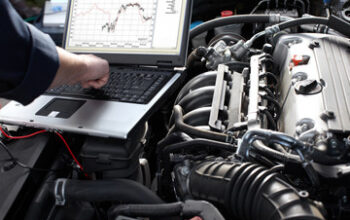We precision-mount and balance your wheels and tires (free) and package them with all installation hardware. We’ll also ship them to you at a great price.
Trucks travel on smooth highways and streets, but they also make deliveries off-road on rocky terrain. Choosing the right wheel size will help you handle the roughest roads while saving money on fuel. To learn more about Truck Wheels And Tires read the article below.
Often overlooked, the size of truck wheels and tires can have a big impact on your vehicle. In addition to creating a unique look, bigger tires can also provide more traction when driving off-road or in rocky terrain. However, before you decide to swap out your stock tires for bigger ones, there are some important factors that you should consider.
First of all, make sure that the new tires you’re interested in fit your truck’s rim size. Some people make the mistake of buying a larger tire than their vehicle is designed to support, and this can lead to poor handling and uneven wear on your tires. If you’re unsure of the proper tire size for your truck, consult its owner’s manual or contact one of our experts for guidance.
Another important factor to consider is the weight capacity of your new tires. Unlike passenger car tires, truck tires are designed to handle much heavier loads for longer periods of time. They have higher load ratings and tougher construction to handle this extra weight. Truck tires also have thicker sidewalls to protect against damage from rocks and other debris while off-roading.
In addition, truck tires are usually smaller than passenger car tires, which can affect the handling of your vehicle. Smaller truck tires can cause your vehicle to feel less stable, especially when traveling at high speeds. Lastly, changing the size of your truck tires may require you to install a lift kit in order to accommodate the larger tires, and this can change the alignment angle of your wheel well.
If you want to improve your truck’s performance capabilities, consider plus-sizing your tires. This involves putting a lower-profile tire on a larger-diameter wheel to improve cornering and handling. However, upsizing can impact the ground clearance and speedometer of your vehicle, and it may require you to have its Advanced Driver Assistance Systems recalibrated.
In addition, larger truck tires may be more expensive than passenger car tires, and they may require special lug nuts or locks. Finally, lifting your truck to fit larger tires can increase its center of gravity, which increases the likelihood of it tipping over.
Style
Truck owners have an abundance of aftermarket wheels and tires to choose from. These products have a big impact on how your vehicle looks, but they also influence how it performs and what type of terrain it can handle. Choosing the right tires and wheels starts with understanding your driving needs and preferences.
For example, if you’re planning on driving your truck off-road, you’ll need a set that can handle the roughest conditions. In this case, you should look for a set that features tires with a high aspect ratio. This means that the tires have a large contact area and are better able to grip the ground.
Another factor to consider is the style of the wheel. There are plenty of options, ranging from classic chrome to sleek black. For those who want something more unique, a custom throwback or billet wheel might be the way to go. Regardless of which type you choose, make sure the wheels match your truck’s overall aesthetic and can be easily cleaned.
Aside from style, it’s important to consider the weight of the wheels. A standard steel wheel will provide durability, but it can also be quite heavy. This will affect how your truck accelerates and brakes, and it may even cause the suspension to sag. Thankfully, there are alloy replacements available that can be lighter and still offer the same level of performance.
The wheel’s offset is another factor to consider. This is the distance from the center of the wheel to the mounting surface. If you want the tires to stick out farther than the factory wheels, you’ll need a negative offset. Otherwise, a positive offset will be enough to achieve your desired look.
If you’re unsure which type of wheel is best for your truck, speak with an expert at a local tire shop. They can help you select a wheel and tire that will match your truck, fit within your budget, and meet your driving needs. In addition, they can precision-mount and Hunter Road Force balance the wheels for free (using non-lead weights) and package them with all the necessary installation hardware.
Directionality
One mistake people often make when choosing truck wheels and tires is not taking into consideration how directional they are. Directional tires are designed to be positioned in one specific direction, and if they’re mounted incorrectly, it could affect your vehicle’s performance. It’s best to have a professional mount your tires, as it will ensure they are facing the correct direction.
Directional tires are a great choice for many drivers, as they can help improve traction in wet weather conditions. The tread pattern on a directional tire is designed to channel water outward from the center, which helps prevent hydroplaning. Directional tires are also ideal for drivers who want to increase the performance of their car.
If you’re not sure whether your tires are directional, you can check their sidewalls for an arrow or indicator that shows the direction the tire should be positioned. If the tire has an arrow pointing to the front of your vehicle, it’s directional; if there are no words or an arrow, the tires are non-directional and can be placed facing either direction.
Since directional tires are designed to be positioned in a certain way, they cannot be rotated in the same way as symmetrical or asymmetrical tires. Instead, they must be dismounted and flipped to the other side for a proper rotation. If you have a staggered setup, which is common for high-performance vehicles, it’s important to remember that only the front tires can be rotated and not the rear ones.
Directional tires can be difficult to work with, but they can provide an elite look for your truck. The first step is to decide what kind of look you’re going for, and then you can choose the right wheel and tire sizes for your vehicle. You should also consider how directional the wheels will be and always ask about the style of the tread before making a purchase. By doing this, you’ll be sure that your new truck wheels and tires will look amazing on your truck. It’s worth the extra effort!
Look
Truck drivers often upgrade their wheels and tires to improve the performance of their pickups. They might also be looking to add a stylish appearance to their trucks. Whatever the motivation, truck owners have a lot of options when selecting new wheels and tires. Having a good understanding of the basics will help them select a set that will provide both functionality and style for their pickups.
The look of your new wheels and tires depends on many factors, such as their design, finish, and size. For example, chrome wheels are a classic option for those who want a sleek and classy look, while painted alloy wheels offer a more durable and affordable alternative. If you want your wheels to stick out, consider the wheel’s backspacing, which refers to the distance between the inner edge of the tire and the mounting surface. A deeper backspacing will make your tires look larger, while a shallower one will have the opposite effect.
Other factors that influence the look of truck wheels include their diameter and height, as well as their width and profile. A larger diameter increases the amount of the tire that touches the ground, allowing you to fit a wider and lower-profile tire without exceeding your vehicle’s stock suspension capabilities.
Similarly, a larger wheel height will allow you to install a taller, narrower tire while keeping the overall diameter of your truck’s wheels similar to their factory counterparts. This can be important for truck drivers who regularly drive off-road or on rocky terrain.
While a bigger diameter may affect ride quality, it’s also important to keep in mind that a larger rim will require more maintenance. Larger rims can be more susceptible to cracking and damage, especially if they’re not properly cared for. This is why it’s important to choose a wheel that is both functional and attractive, such as lightweight forged wheels.
There are many different styles of truck wheels and tires available. Whether you’re looking for a sleek and classy chrome or matte finish or something that stands out from the crowd, RealTruck has a wide selection of brands to meet your needs. We even carry true beadlocks, which are a unique style that clamps the bead of the tire between two pieces of the wheel.

